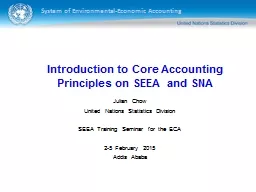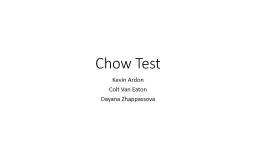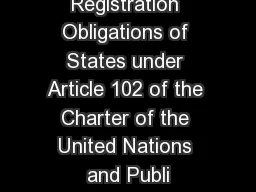PPT-Julian Chow United Nations Statistics Division
Author : lois-ondreau | Published Date : 2019-11-08
Julian Chow United Nations Statistics Division SEEA Training Seminar for the ECA 25 February 2015 Addis Ababa Introduction to Core Accounting Principles on SEEA
Presentation Embed Code
Download Presentation
Download Presentation The PPT/PDF document "Julian Chow United Nations Statistics Di..." is the property of its rightful owner. Permission is granted to download and print the materials on this website for personal, non-commercial use only, and to display it on your personal computer provided you do not modify the materials and that you retain all copyright notices contained in the materials. By downloading content from our website, you accept the terms of this agreement.
Julian Chow United Nations Statistics Division: Transcript
Download Rules Of Document
"Julian Chow United Nations Statistics Division"The content belongs to its owner. You may download and print it for personal use, without modification, and keep all copyright notices. By downloading, you agree to these terms.
Related Documents














